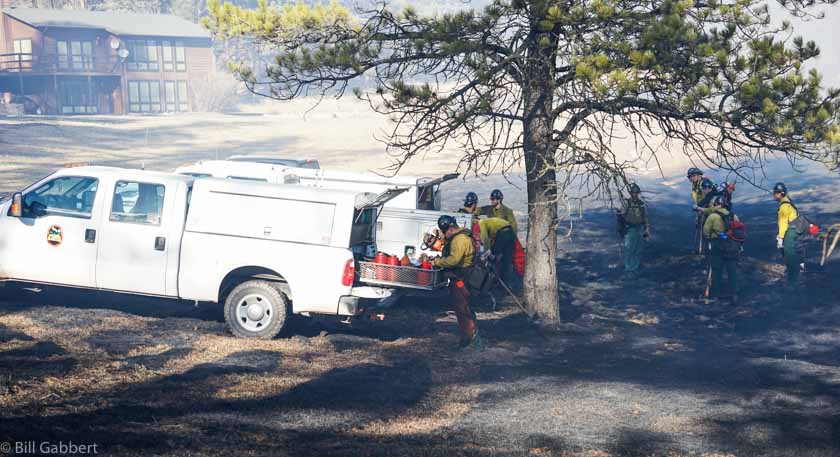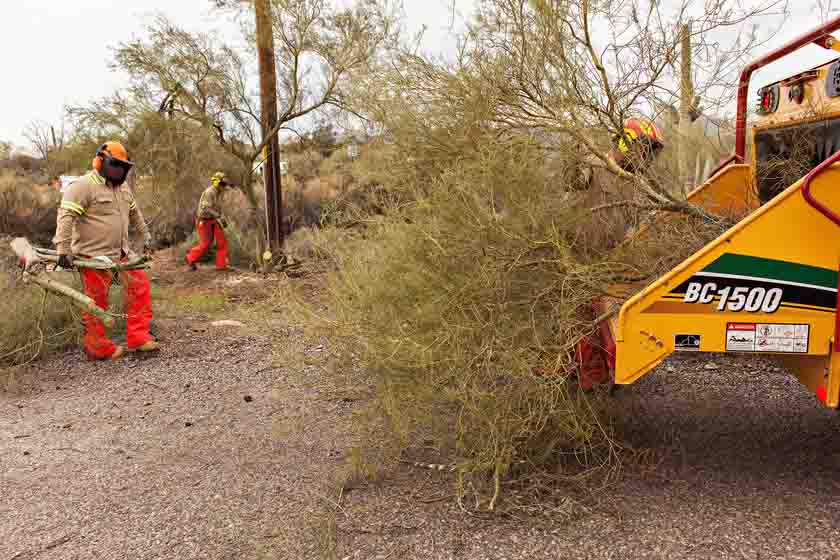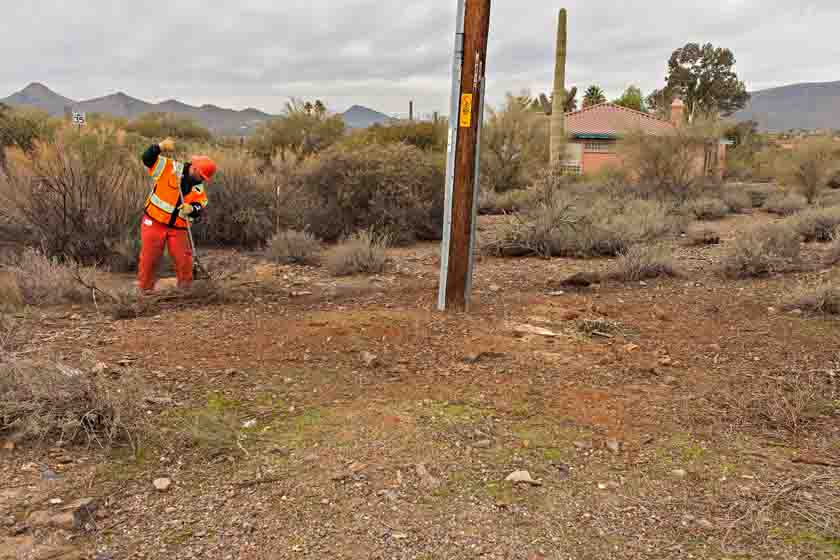(UPDATED at 4:50 p.m. MST March 9, 2017)
The reported size of the Whitetail Fire in Custer State Park in South Dakota increased today t0 249 acres, in contrast to the earlier estimate of 100 to 150 acres. The change is due partially to better mapping, but primarily to large burnout operations to tie in the edge of the fire to firebreaks such as roads or natural barriers.
The cool, damp weather today facilitated quite a bit of progress toward establishing a fireline around the blaze. Containment increased on Thursday and a spokesperson for the fire said some firefighting resources would be released at the end of the shift.
It turns out that contracted Type 1 helicopters were never ordered for the fire, and the National Guard Blackhawk helicopter was not needed today.
****
( Updated at 8:35 a.m. MST March 9, 2017)
The Whitetail Fire in Custer State Park in South Dakota is still estimated at 100 to 150 acres.
The weather on Thursday will help the firefighters, with much lower temperatures and the possibility of precipitation. The high temperature in the area of the fire Thursday will be around 40. The relative humidity will rise throughout the day, reaching 90 percent by sunset as the chance of precipitation increases from 23 percent to 34 percent.
The temperature at a nearby weather station got down to 18 degrees Wednesday night. The most pressing issue for firefighters was probably keeping the plumbing on their fire engines from freezing.
The 3-D map below shows in red the very approximate, rough location of the fire. The exact perimeter is unknown. A spokesperson for the fire we talked with did not know if the fire has reached Highway 87, which is still closed north of Blue Bell Lodge.

A firefighter we talked with Wednesday night said the spread of the fire was “hung up” in rocky terrain and discontinuous fuel. The fire is burning in the footprint of the 2004 Cicero Peak Fire, which is the reason for the lack of vegetation to easily carry the fire, especially on flat or downhill runs. If it keeps spreading to the east or northeast and progresses out of the Cicero Peak Fire it would be in older vegetation for a short while before it moves into the scar from the Galena Fire that burned 16,788 acres in 1988.
On Wednesday a Blackhawk helicopter from the National Guard assisted firefighters on the ground by dropping water. Late in the day a fixed wing air attack aircraft arrived that provided eyes in the sky and can help direct the helicopters.
****
(Originally published at 9 p.m. MST, March 8, 2017)
In March and April the Black Hills of South Dakota usually have a two-month prelude to the summer fire season which gets going later — around July. During these two months the snow is usually gone, the temperatures rise, RH drops, the fuels are drying, and it can be windy. Beginning in May greenup occurs and slows things down until the herbaceous vegetation cures in mid-summer.

The prelude conditions were present today when a tree fell into a powerline and ignited a fire just west of Custer State Park near the intersection of Lower French Creek Road and Whitetail Road. It was reported at 1:20 p.m. MST; two minutes later the S-NPP VIIRS I Band sensor on a polar orbiting satellite had a single hit, detecting the fire.
During the afternoon a nearby weather station recorded a temperature of 55 degrees, RH in the high 20’s, and sustained southwest to west winds of 10 to 14 mph gusting at 18 to 30. As the strong wind blew the smoke toward the northeast it stayed close to the ground until it rose and mixed with a narrow band of fairly low clouds whose southern edge was right at the fire. From a distance the smoke was difficult to see because of the clouds which seemed to stay in about the same location for hours, in spite of the strong winds.
In the size-up given by the initial attack Incident Commander (IC) about 20 minutes after his arrival he said the estimated size was 15 to 20 acres. In addition to requesting an additional hand crew and a dozer, he asked for single engine air tankers. Told those were not available he requested a large air tanker. After a while the dispatcher came back and said it would take 24 hours to get a large air tanker. He said, well, keep that order in, we can always cancel it. There was discussion about ordering large Type 1 helicopters. Later the IC ordered additional engines, dozers, and hand crews, as well as a Type 3 Incident Management Team.

There were about half a dozen structures, including residences, within a quarter mile of the fire’s origin, and the wind was driving it toward Mount Coolidge, at 6,023 feet above sea level it was 1,000 feet higher than the point of origin and 1.3 miles away. On the peak is a fire lookout tower made mostly of stone and there are several electronic sites.
Soon after it started, the fire spread into Custer State Park.
As of 8 p.m. MST on Wednesday the fire had not reached the top of Coolidge.
The size estimate we were able to obtain at 9 p.m was 100 to 150 acres.
Wednesday night Highway 87 in Custer State Park was closed from Blue Bell Lodge to the intersection of Hwy 16A.
Continue reading “Whitetail Fire in South Dakota burns toward Mount Coolidge”








